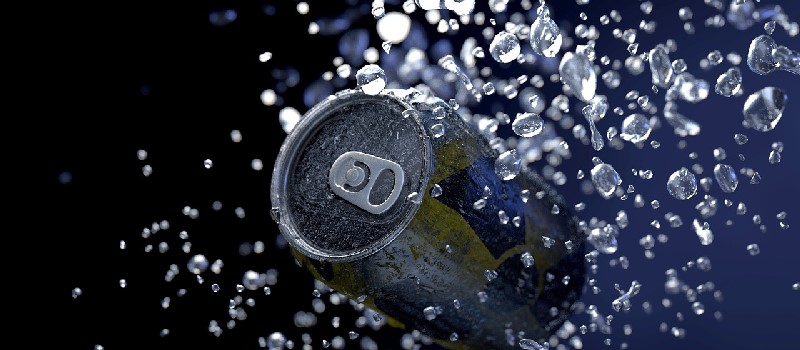
Switching to metal packaging? What you need to consider
10 May 2021 | Lynneric Potter, Food Packaging Technical Lead
With the UK and EU pushing for a circular economy, the introduction of the plastic tax and aluminium’s incredible recyclability, it’s easy to see why some food and drink manufacturers are replacing their plastic containers with alternative, metal materials. But how easy is this in practice?
Making the switch from plastic to metal packaging doesn’t come without its inherent issues, and manufacturers must be aware of these and know how to overcome them if they don’t want to come across any unexpected surprises further down the road.
With over 20 years of experience in food packaging, our team at Campden BRI has helped food and drink businesses with almost every potential issue that can arise from metal packaging. Here I’ll detail what needs to be considered when using metal packaging and how testing can help you mitigate potential issues.
What to consider when switching to metal packaging
From initial development to shipping, manufacturers must consider a number of factors when switching to metal packaging, including:
- Transport conditions: ‘During shipment could my product experience a range of temperatures when in the container causing my packaging to expand or form condensation resulting in corrosion?’
- Migration challenges: ‘There’s a chance metal migration could cause the levels of aluminium in my product to exceed the Beverage Can Makers Europe (BCME) recommended limit*.’
- Taint issues: ‘I’ll have to seek consumer testing to ensure metal migration doesn’t impact the product’s taste.’
- Shelf-life: ‘Will my shelf life change?’ ‘Can I get a longer life due to the barrier properties of metal packaging?’
*A recommended limit of 2ppm of aluminium per can at 25°C after six months is set by the BCME.
Testing can help prevent serious packaging malfunctions or an impact on the product’s quality, helping manufacturers avoid any unexpected financial burden or an impaired product.
It’s evident that inherent issues may arise when using metal packaging, which is why it’s important to ensure you’re exposing your new packaging to rigorous testing by experts - they’ll know of the potential issues that may arise and can assess accordingly. Testing can help prevent serious packaging malfunctions or an impact on the product’s quality, helping manufacturers avoid any unexpected financial burden or an impaired product.
The best way to illustrate this is with a case study that demonstrates compatibility testing.
Case study: determining the impact of putting orange juice in cans
A manufacturer of fruit-based soft drinks wanted to assess a new packaging format, aluminium cans, for their still orange juice product. The producer approached us to conduct an independent study which required analytical and physical testing of the can as well as assessing the sensory aspects of the product during storage at two different temperatures.

Making the switch from plastic to metal packaging can help feed the circular economy but may present manufacturers with issues.
Packaging methods
A visual corrosivity judgement was carried out to assess the aluminium cans’ performance and identify defective areas. Meanwhile, an elemental analysis determined aluminium pick up in the beverage over a 12-month storage period. Sensory testing was carried out on the product using a quality grading system to provide details on the organoleptic properties over storage.
What did we find?
The study revealed that storage of the juice (in its new aluminium packaging) in warm weather countries could cause issues that make the product fail, highlighting the need to consider a different shelf-life for products destined to be sold in countries with different climates. The study also confirmed that, at 25°C, the product’s packaging performed as expected showing presence of aluminium within the recommended health limit. For the sensory assessment, it was revealed that a change in both colour and taste would occur if the product was stored at 40°C, whereas those kept at ambient (23°C) temperatures showed no significant change.
These results allowed the manufacturer to determine what they would need to consider before using their new aluminium packaging format, while confirming that there would be no health risk from the migration of aluminium into the product.
Testing to mitigate packaging issues
Packaging testing can be a bit of a minefield, but our experts can guide you towards the best course of action based on your specific needs. Having an idea of the available packaging tests and what they’re used for can be a great starting point to help you on your packaging development journey.
Here are the most common tests and the issues they can help you investigate:
- Corrosion analysis – what’s causing your packaging to corrode? This analysis helps you investigate what may be causing the corrosion (either external or internal) of your metal packaging. This can help narrow down whether the issue stems from manufacturing, the product or from elsewhere.
- Score line analysis – is your product easy to open? For ease of opening with a ring pull tab, our team can measure the depth of the score line against the thickness of the can end using a scanning electron microscope (SEM) to obtain images and accurate measurements. This method can also be used when investigating integrity issues.
- Seam assessment – how robust are your can’s seams? This method can help you ensure your metal packaging does not fail. Our experience with canning dates back over 100 years when we were founded after WW1. Our team is further developing its capability in this area with world-renowned training from Crown: a leading global supplier of rigid packaging products. Techniques include manual and vision technology to determine whether food and beverage cans are within specification.
Need help in this area?
At Campden BRI, we have experts with extensive experience in the testing and development of packaging to suit our clients’ needs. We’ve recently merged our packaging and chemistry teams to provide you with a one-stop-shop and just one point of contact for all your packaging needs. Do get in touch if you require further assistance in this area, we’d love to help.

About Lynneric Potter
Lynneric has worked at Campden BRI since 1999, and has spent the majority of this time specialising in all things packaging, including supporting members and clients, managing contract projects, and conducting research.
Packaging services
Find out more about the packaging services that our experts can offer you.
How can we help you?
If you’d like to find out more about testing your packaging, contact our support team to find out how we can help.







